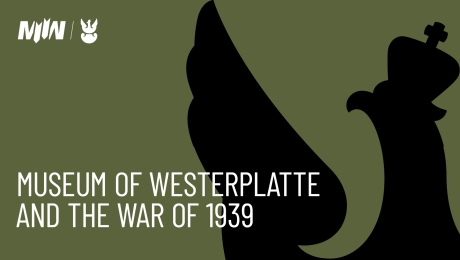POWER PLANT
We continue renovation work to restore the former glory of the former power plant building and adapt it for exhibition purposes. Soon, an archaeological exhibition will be housed within it, featuring relics found during archaeological missions related to the operation of the Military Transit Depot at Westerplatte.
About the Facility
The technical building, crucial for the operation of the Military Transit Depot, was included in the initial plans for the development of the Westerplatte area in 1924, in the southeast part of the ammunition basin. Construction work began on May 25th, 1926, and by the end of the year, the power plant was handed over to the Polish side. The brick structure was built in a rectangular plan with dimensions of 13 × 27 meters.
The total usable area of all its rooms was approximately 350 square meters. However, the building required further work. Specialized equipment was needed to ensure the complete independence of the Polish facility from electricity supplies from the Free City of Gdańsk. This was achieved in 1928. The building was equipped with a transformer station, diesel generators, and pumps that enabled the operation of electric cranes for unloading and loading materials in the ammunition basin.
The power plant was not included in the peninsula's defense system. A combat position prepared approximately 170 meters to the east of it was intended to protect it from any anticipated assault from the ammunition basin. Interestingly, despite bombing and heavy artillery fire in September 1939, the building survived in almost undamaged condition. However, during the 1945 offensive, both the power plant and the ammunition basin suffered significant damage. Nevertheless, the facility was quickly rebuilt, retaining its original shape.
More About the History of the Power Plant at Westerplatte
Exhibition Plans
The goal of the archaeological exhibition located in the renovated former power plant building will be to provide a comprehensive overview of the history of Westerplatte from the 17th century to the early 1940s. The authors aim not only to tell a comprehensive story but also to present it from various perspectives, including the history of the peninsula as a resort and the establishment of the Military Transit Depot in challenging socio-political conditions. One of the key themes of the exhibition will be the daily life of the depot's soldiers, which will be presented in as much detail as possible. The exhibition will emphasize the resilience and determination of the Westerplatte defenders, who fought for seven days against overwhelming enemy forces in isolation. The creators aim to highlight the attitudes that have become a symbol of the heroism of Polish defenders.
Visitors will learn about the history of the place where one of the most tragic conflicts of the 20th century began, through contact with authentic artifacts. Thanks to the efforts of the Archaeological Department of the Museum of the Second World War in Gdańsk, this story, symbolically recorded in the soil of the peninsula, has a chance to come to light. Among the more than 50,000 artifacts obtained during nine stages of archaeological research, approximately 200 objects will be featured in the exhibition.
Implementation
On January 9th, 2023, the Museum of the Second World War (MSWW) signed a contract with the design firm Koza Nostra Studio sp. z o.o. to develop a comprehensive executive project for the archaeological exhibition in the modernized former power plant building. This is part of the construction project for the Westerplatte and 1939 War Museum – a branch of the MSWW.
More about the individual stages of the investment implementation:
• Signing a contract with the exhibition project contractor in the former power plant building at Westerplatte
• Commencement of works for the modernization of the former power plant building at Westerplatte
• Signing a contract with the contractor for the modernization of the former power plant building, including land development at Westerplatte
• Competition for the construction of the exhibition in the power plant at Westerplatte
• Laying the cornerstone for the Westerplatte and 1939 War Museum
• The power plant is the first facility of the emerging open-air museum at Westerplatte.
Dofinansowano ze środków Ministra Kultury i Dziedzictwa Narodowego
Program wieloletni pn. „Budowa Muzeum Westerplatte i Wojny 1939 – Oddziału Muzeum II Wojny Światowej w Gdańsku”











